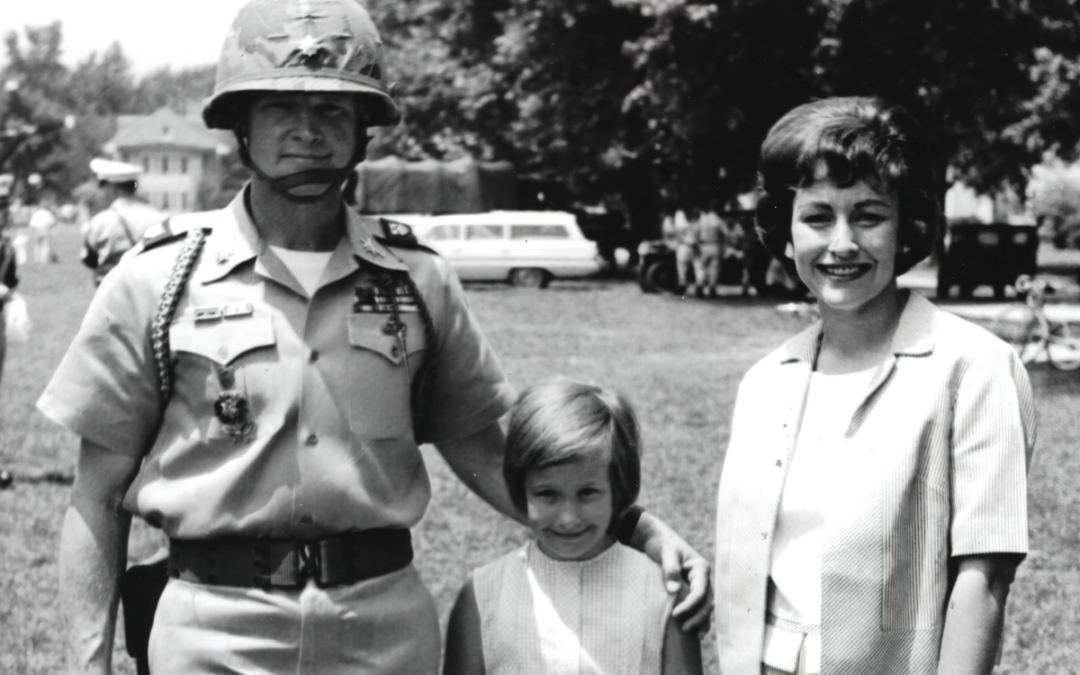Originally published in the Saporta Report
This Memorial Day, it is appropriate to remember Lt. General Hal Moore and his wife Julie, for whom the Columbus, Ga., Army base was renamed earlier this month to honor their individual achievements and highlight the importance of families to military readiness.
Documents supporting the name change to Fort Moore said the couple “exemplify America’s highest standards of command and compassion.” Hal Moore was one of the Vietnam War’s most honored leaders and Julie Moore was a leader on the home front with her focus on the well-being of Army families and her insistence on a more respectful method of notifying the relatives of fallen soldiers.
The new name for Fort Moore “uniquely honors the families of slain soldiers and highlights the military spouse’s invaluable contribution while recognizing the importance of the family to combat readiness. There can be no better or unique way to inspire the men and women who will train at the renamed Fort and to acknowledge the role of the Army spouse and family,” military documents read.
Fort Moore is the only base named for a couple rather than an individual military figure.
A native of Kentucky, Hal attended West Point. Julie was the daughter of a Colonel and was born at Fort Still, Okla. She met her future husband shortly after college and the couple married in 1949 with a military ceremony which included the traditional crossed swords. The following 32 years included the birth of five children and 28 moves across ten states and two countries. Two sons became West Point graduates like their father and followed in his footsteps as Army officers.
Their life together as a “command team” was featured in three books, one movie and two museum exhibitions. In the 2002 movie based on, “We Were Soldiers Once… And Young,” Mel Gibson portrays Hal Moore and Madeline Stowe portrays Julie Moore.
The book and movie focus on the events around the battle of Ia Drang in November 1965, the first major ground engagement of the Vietnam War, which involved, among other units, the First Battalion, Seventh Calvary under the command of then Lt. Col. Hal Moore. The more than 2,000 Vietnamese combatants vastly outnumbered the American forces. Following an intense three-day battle, the Vietnamese abandoned the battlefield, leaving 600 of their dead behind.
Hal was awarded the Distinguished Service Cross for his actions during the fight and later assumed command of the Third Brigade, leading it through several campaigns in 1966. Because he so frequently shared the risks of combat with his troops, he earned another Bronze Star Medal for Valor and individual awards of the Vietnamese Cross of Gallantry with Palm. The Smithsonian Museum, as well as the National Infantry Museum, includes him in exhibits about the Vietnam War.
Back on the home front, the impact of the Ia Drang battle was deeply felt in Columbus, Georgia, where Julie lived with her five young children. Joseph Lee Galloway, who co-authored two books with General Moore: “We Were Soldiers Once … and Young” and “We Are Soldiers Still” described the events of 1965 in a 2004 obituary tribute to Julie Moore written for McClatchy Newspapers.
In his tribute, he called Julie Moore “one of the finest Army wives who ever walked” and recounted events that became a pivotal scene in the movie:
“In the dark days of November 1965, she did the hardest duty of all: She visited the small bungalows and trailer houses around Columbus, Ga., to offer her sympathy and support to new widows whose husbands had died in action in the Ia Drang Valley of South Vietnam,” Galloway wrote.
“In those early days of the war, the Army was overwhelmed by hundreds of death notices for unsuspecting families. It had forgotten how to do this right, so the Western Union telegrams were handed over to taxi drivers. Julie Moore was horrified when one taxi driver pulled up to the small house where she and the five young children of Lt. Col. Hal Moore, commander of the 1st Battalion 7th Cavalry in Vietnam, were living. It took her a long, long time to answer the doorbell, a lifetime really, and then the driver apologized, said he was lost and asked her where he could find this address.
“Mrs. Moore followed in the wake of that taxi and others to comfort the new widows and orphans of a war that would, itself, ultimately be orphaned and abandoned. She also raised unshirted hell with the Pentagon about so callous a method of notifying the families.”
Within two weeks, the policy was changed. The new policy required casualty notifications by an officer and a chaplain who would personally deliver the news and convey the condolences of a grateful nation. This shift was the beginning of a concern for Army families, which grew into the Army’s Community Service Organization which is now a fixture on all Army posts.
Julie and Hal Moore are buried together in the cemetery of the Fort which now bears their name — not far from her parents and near the men who died so long ago in Vietnam. Each of them is honored with a special permanent exhibit at the Fort Moore Infantry Museum and Hal Moore is featured in a Smithsonian Museum of American History exhibit on the Vietnam War.

